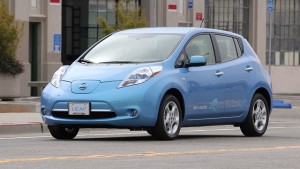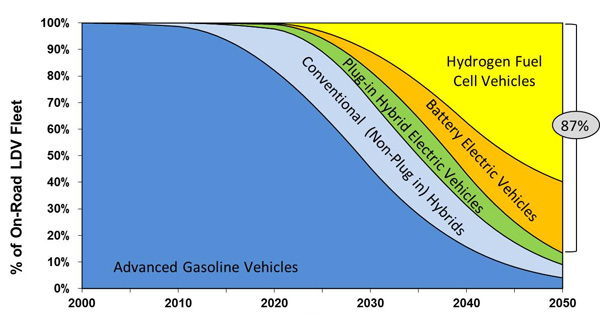“We have been at the forefront of encouraging, and some would people would say forcing, new technologies. The Prius hybrid electric vehicle is an example of that,” says Tom Cackette. Chief Deputy Director of the California Air Resources Board.
California’s Clean Car History
Cackette says to see California’s legacy of shaping national car policy, you have to go back to 1975. The state had a growing smog problem, so the air board required cars to have catalytic converters. The federal government followed. California then tightened air pollution rules for cars. And tightened them again. “And almost in every case, the federal government would follow two, three, four, five years later.”
Today, new cars emit 99 percent less smog than cars did in the 1960s. “It’s probably the most successful environmental program in the world,” says Cackette.
[box size=small align=right color=white]Clean car diaries
What’s it like to drive an electric car on an everyday basis? Check out our new blog with lessons from early adopters.[/box]
Now, California has a new goal: dramatically cutting greenhouse gas emissions to fight climate change. Transportation accounts for 40% of the state’s emissions. “The number one strategy to reduce greenhouse gases is these car standards,” he says.
The proposed standards would cut greenhouse gas emissions from new cars in half by 2025. “We actually worked very closely under the federal government under the Obama Administration and we’ve jointly developed the standards. So they won’t just apply in California. But they’ll apply nationwide.”
Meeting these tougher standards will raise car prices by about $1900, but Cackette says those costs would be offset by fuel savings.
Jumpstarting Electric Car Sales
On top of that, California is taking an even bolder step, requiring automakers to sell increasing numbers of clean cars in the state. By 2025, they’d have to sell almost a million and half vehicles that run on electricity or hydrogen fuel cells.
The thing is – California has tried this before. And it didn’t work. “I guess I would call it a little too visionary perhaps,” says Cackette. In 1990, the Air Resources Board mandated that 10 percent of new car sales be “zero emission” cars by 2003.
“Obviously that didn’t happen. The price of gas was cheap in those times. The price of the technologies were high,” he says. The air board loosened the rules to include hybrid cars and cleaner gasoline engines, which he says drove carmakers to develop them faster.
Now, Cackette believes that technology has come of age. Nissan is selling the all-electric Leaf and Chevy is selling the Volt, a plug-in hybrid. And there’s another big difference.
Automakers Onboard
“The car manufacturers were adamantly opposed to the concept of government telling them they needed to build a new type of technology. That’s changed.”
“You are seeing more agreement between automakers and California and the federal government,” agrees Gloria Bergquist, a spokeswoman for the Alliance of Automobile Manufacturers in Washington DC.
“Automakers have invested billions of dollars in these technologies. And so in some ways we have similar interests. Our interest in recouping our investment is now aligned with the societal imperative to get more of these vehicles on the road,” she says.
Bergquist says meeting the mandate calling for carmakers to sell a certain number of clean vehicles will ultimately depend on consumers. “There’s still a concern about what the consumer acceptance of these technologies is going to be and that can make a mandate very scary.”
Groups Push for Tougher Rules
“We think California could be bolder,” says Don Anair is with the Union of Concerned Scientists, a non-profit group that supports even stronger clean car rules.
“We need that technology to advance for the technology cost to come down and make these vehicles accessible to more and more consumers. By having a more aggressive standard, that gives more certainty to investors that California is committed.” Anair wants to see tougher standards sooner rather than later, since it takes 15 years on average for the entire fleet of cars on the road to turn over.
If the new rules are successful, electric cars could be adopted at a much faster pace. Tom Cackette of the Air Resources Board says they’re doing all they can to encourage consumers to buy them, including funding a popular rebate program and working with companies to build an electric car charging infrastructure.


